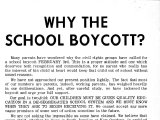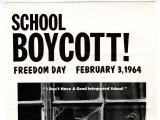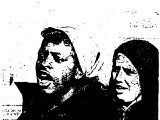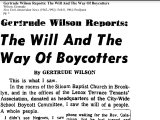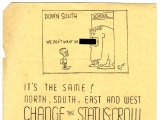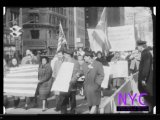You are here:
The 1964 Boycotts
In 1954, the Supreme Court ruled in Brown v. Board of Education that segregated schools were unconstitutional. New York activists like Ella Baker, Mae Mallory, Lucile Spence, and Kenneth Clark had worked tirelessly to desegregate the city’s schools starting in the 1930s. However, city and school officials used a variety of tactics to sustain segregation.
Read More
In 1959, Reverend Milton Galamison was the pastor at Siloam Presbyterian Church in Brooklyn. Galamison founded the Parents’ Workshop for Equality, which announced it would “work for the integration of the schools of New York; for full and equal opportunity for learning for all the children of our city; to end all school discrimination against Negro and Puerto Rican children; and to preserve, improve, and expand our free and democratic public school system.”1
Galamison and the Parents’ Workshop were major forces in making the 1964 school boycott happen. Galamison asked Bayard Rustin to organize the demonstration and he played a key role in drawing media attention to segregation in New York’s schools. However, the Parents’ Workshop depended on many other workers, many of them women and young people, in offices spread throughout neighborhoods in Brooklyn. In particular, the leadership of women like Thelma Johnson and Ellen Lurie sustained the organization. These leaders went door to door to recruit parents, planned meetings, and painted signs. On the day of the boycott, they answered phones, deployed guards and volunteers, and made sure that the demonstration was massive but peaceful. Their leadership and connection with parents in the community created the networks that made the boycott possible.
-
Parents’ Workshop for Equality in New York City Schools, “Constitution of the Parents’ Workshop for Equality in N.Y.C. Schools,” November 1960, Galamison Papers, State Historical Society of Wisconsin, quoted in Lisa Yvette Waller, “The Pressures of the People: Milton A. Galamison, the Parents Workshop, and Resistance to School Integration in New York City, 1960-1963” in The New Black History: Revisiting the Second Reconstruction, ed. Manning Marrable and Elizabeth Kai Hinton (London: Palgrave MacMillan, 2011) 37. ↩︎

